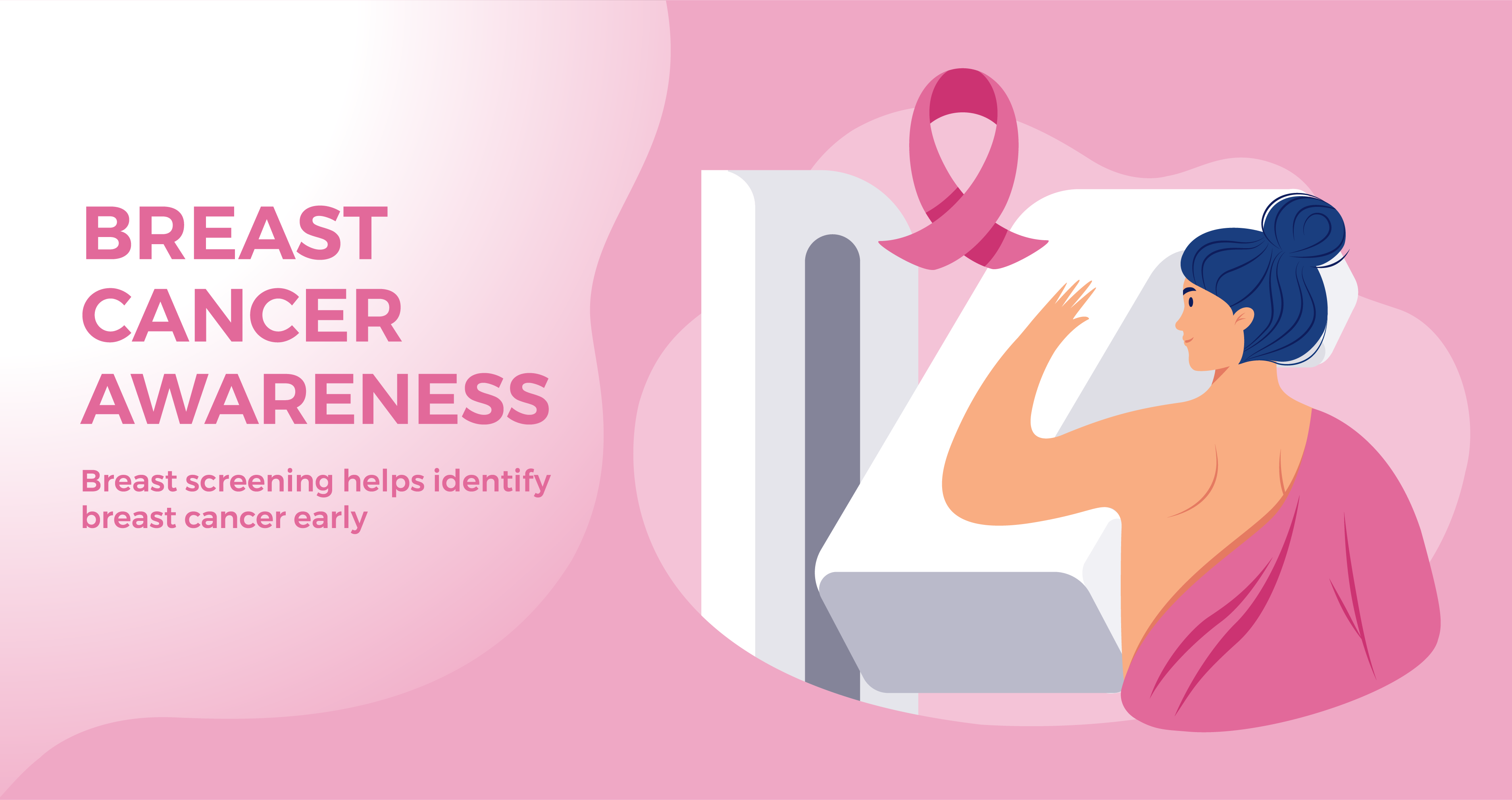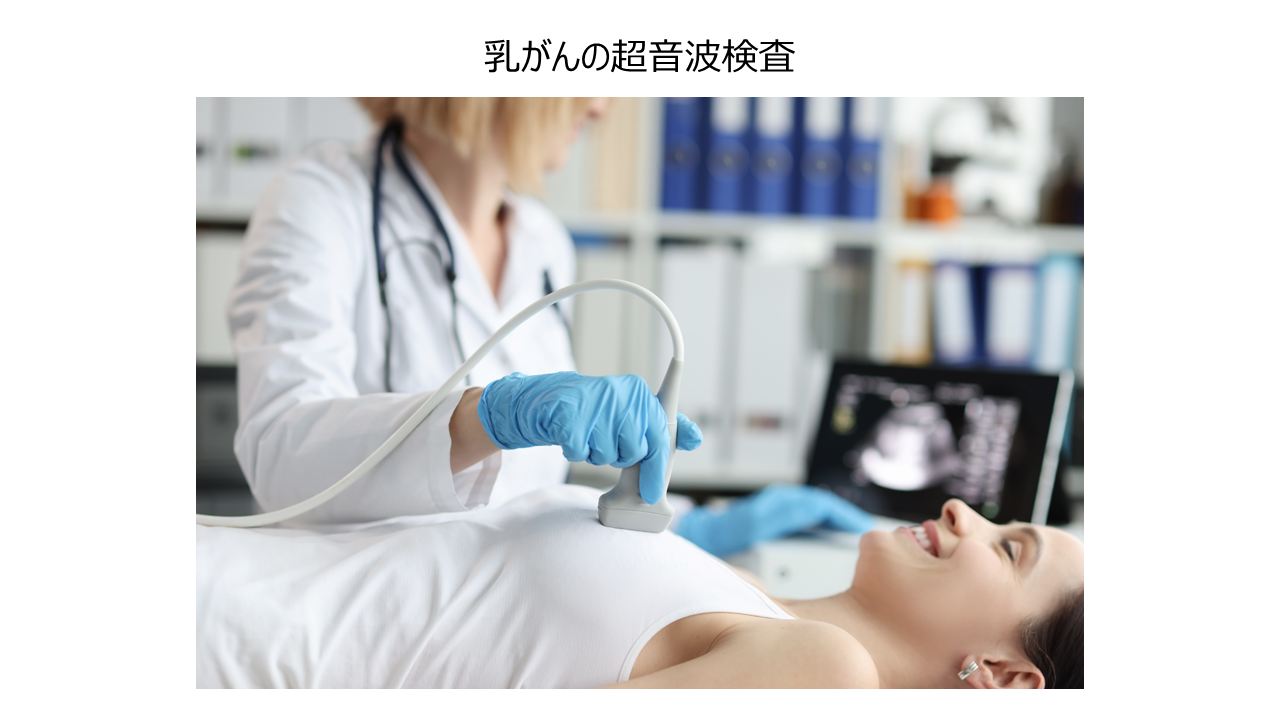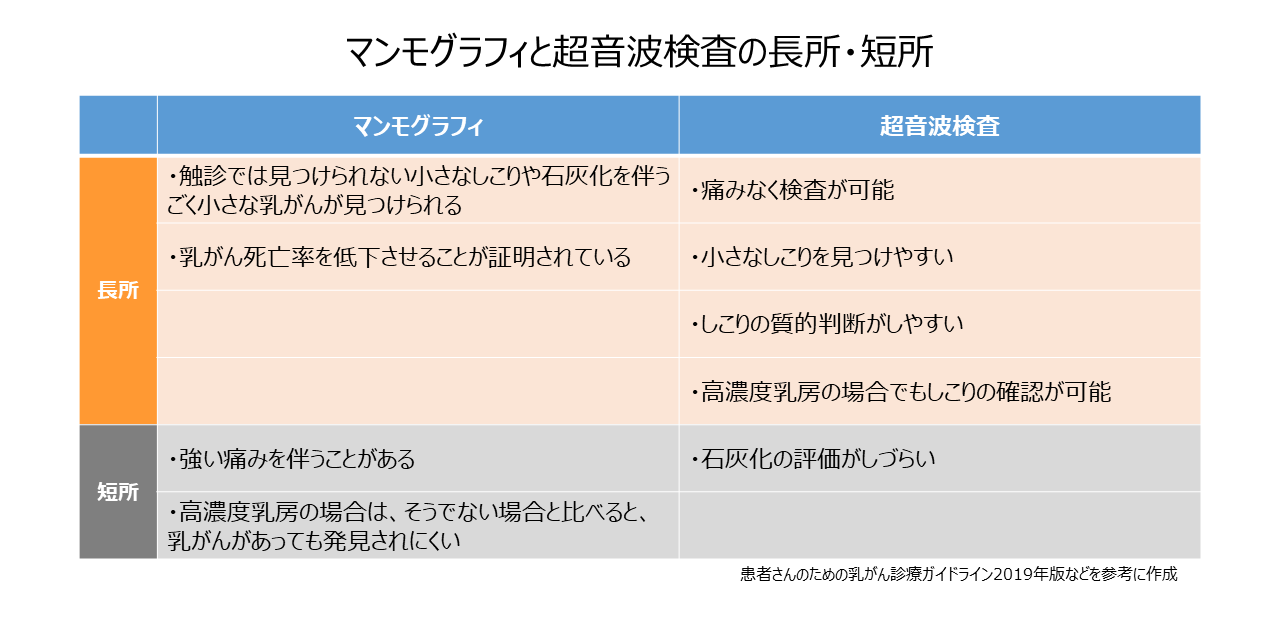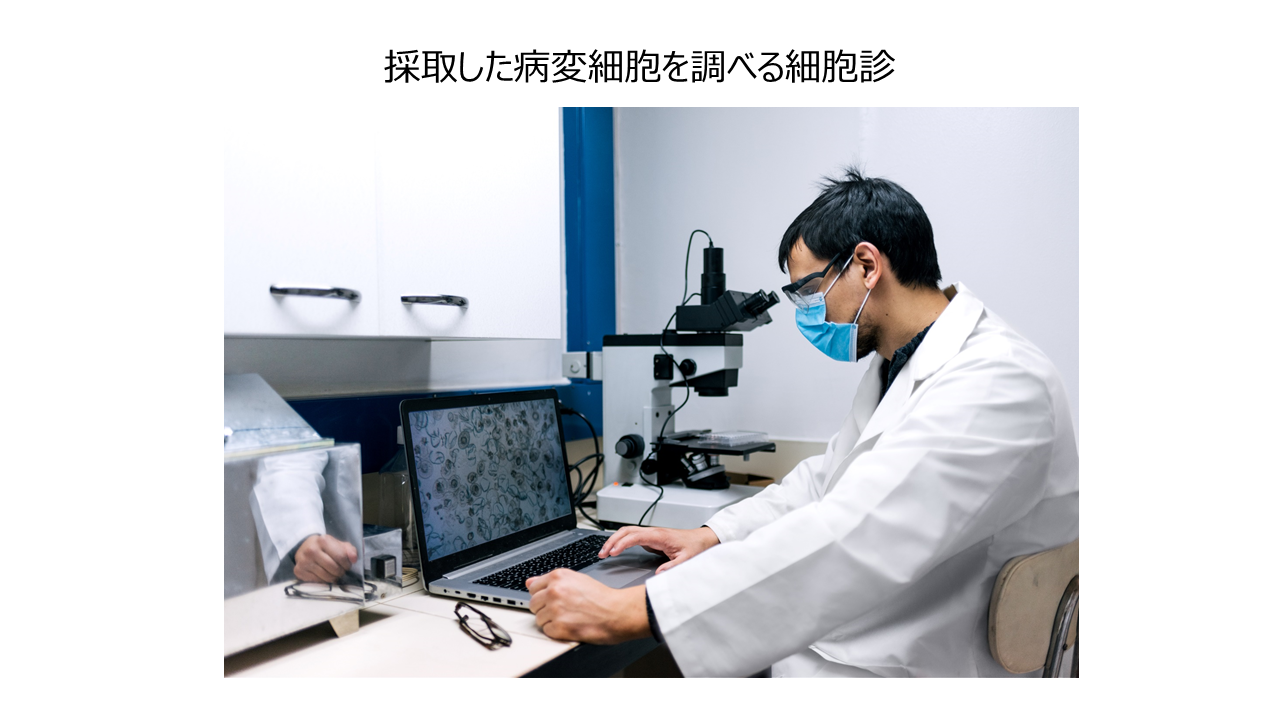
Release date: 2022.10.27
In connection with Pink Ribbon Month in October, which calls for early breast cancer screening, we will summarize breast cancer screenings in three parts. Part 2 introduces ultrasound (echo) examination and cell/tissue examination.
Mammography (X-ray imaging) is the mainstream of breast cancer screening, but since some cancers are difficult to detect with this alone, it is recently being considered to combine it with ultrasound (echo) examination. In a large-scale clinical trial (J-START) that randomly divides and compares a group that received mammography and a group that added ultrasound to mammography, the breast cancer detection rate was higher in the group that added ultrasound. A 1.5-fold increase has been reported (however, its effect in reducing mortality has not yet been confirmed, and further studies are needed to verify this).
In an ultrasound examination, a probe is applied to the breast, high-frequency ultrasound waves are sent, and changes in the sound waves returned from the inside of the breast are converted into images by a computer to diagnose the cross section. Examine the presence or absence of lesions in the breast, the nature and size of the lump, and the presence or absence of metastasis to the surrounding lymph nodes such as the armpit. Above all, it excels at capturing lumps. Large lumps that are difficult to detect by palpation can also be projected. Also, in many cases, it is possible to determine whether the lump is benign or malignant based on the shape of the lump and the properties of the boundary.
Especially for women under the age of 40, mammography results in so-called high-density breasts (breasts with a high density of mammary glands and many white areas in the mammography image), making it difficult to determine whether there is a lump or not. I have. Even in such cases, an ultrasound scan may reveal a lump. Since there is no risk of exposure to radiation, the examination can be performed even during pregnancy. It is also suitable for those who cannot have a mammogram due to breast pain or inflammation. However, finding small calcifications characteristic of breast cancer is easier to detect with mammography. Calcification is the deposition of calcium in parts of the breast. On a mammogram, it looks like a grain of pure white sand, and if many small ones gather in one place, malignancy is suspected.


If there is a possibility of breast cancer, cells or tissue from the lesion are collected and examined under a microscope to confirm the diagnosis. Cytology is mainly performed by examining secretions from the nipple, and cytology is examined under a microscope by inserting a fine needle into a lesion such as a lump and aspirating the cells with a syringe while confirming the image by ultrasonography. In many cases, it is a simple examination that does not require local anesthesia and puts the least burden on the patient's body. However, it has the drawback that false positives (diagnosed as cancer when it is not cancer) and false negatives (diagnosed as cancer when it is not cancer) are rare.
Histological examination is performed when breast cancer cannot be diagnosed by cytological examination even though breast cancer is suspected on imaging. Under local anesthesia, a tissue sample from the affected area is collected and examined under a microscope while being confirmed by ultrasonography. For histology, a needle that is thicker than that used for cytology may be used, or tissue may be surgically removed. Because of the large amount of cells and tissues that can be examined, it is possible to obtain more detailed information about cancer. If it contains cancer cells, we will investigate the nature of the cancer and select the optimal treatment method.

MEDIUS Group is developing a business centered on the sale of medical equipment. We (Medical + us) involved in medical care also want to play the role of an information source (Media) that delivers useful information for the medical field and people's healthy tomorrow.